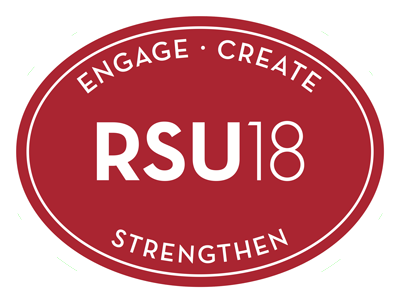The Empty Bowls Project: A Messalonskee Tradition
When people come to the annual Empty Bowls dinner on Friday, March 9, they’ll have more than 200 handcrafted ceramic bowls to choose from to hold their homemade soup.
It’s a remarkable tradition, one that benefits area food banks and involves Messalonskee students and staff as well as people from the community – students from Key Club, Student Council, and the National Honor Society all contribute to the dinner, preparing food, serving tables, and handling the cleanup.
The event, which runs from 5 to 7 p.m. in the high school cafeteria, occurs the same night the spring play Almost, Maine has its second showing in the Performing Arts Center. For the meal ticket ($10 adults, $8 students/seniors), diners get to keep the bowl they select for their soup as well enjoy a dinner that features a salad, beverage, bread, and dessert.
“It is just a wonderful way for people to come together and meet new people,” said PAC Director Susan Perrino, “and after [the dinner], they can go to the play if they wish.”
Perrino partners with Messalonskee art teacher Sherrie Damon and retired Messalonskee art teacher Wendy Burton, the person who started the Empty Bowls program at the high school, to organize the fundraising meal.
Over the years, the event has drawn as many as 200 people and typically raises about $800, according to Perrino.
And the stars of the show are the bowls, many of which are shaped, baked, and decorated by Damon’s students in her classroom, which comes equipped with a massive barrel-shaped kiln to bake or dry the clay bowls – thanks to its 1,800-degree temperature – and a collection of about 50 glazes that enable budding sculptors to create a seemingly endless number of bowl colors.
“Most of the time the students are excited about the Empty Bowls project,” Damon explained. “The closer we get to the event, the more real it is to them.”
The process that produces the ceramic bowls for the dinner is long and involved. Students start by taking a brick of clay and putting it through a slab roller to flatten the material. Then they wrap the clay around one of various shaped molds to form the shape of the bowl. The baking comes next. After 12 hours in the kiln, the clay bowl has to cool, and once this is achieved, the glazing can be done, although it takes three applications to finish that stage. Finally, the bowl goes into the kiln to be baked for the last time.
After all that work, students sometimes are reluctant to part with their creation, and for such students, an option that stays true to the mission of Empty Bowls is available. “Some of the students,” Damon said, “buy their own bowls for the ticket price (of the dinner).”
